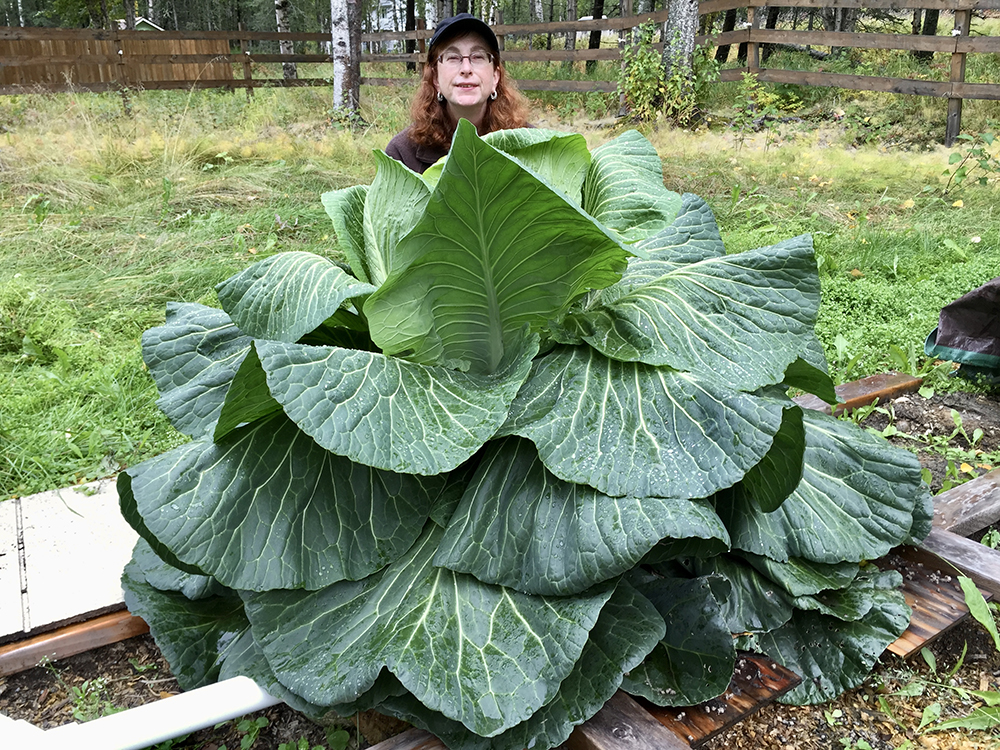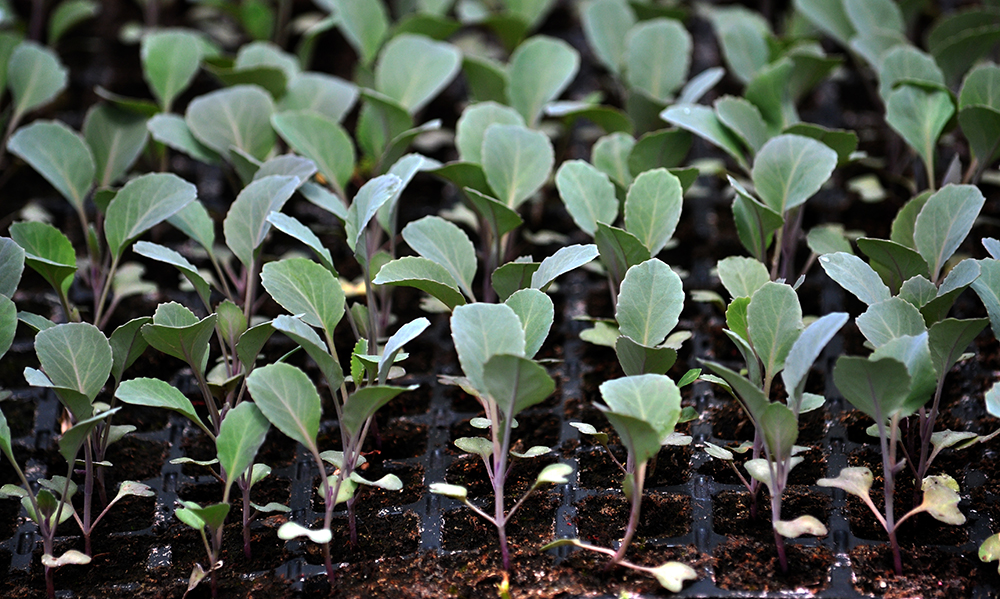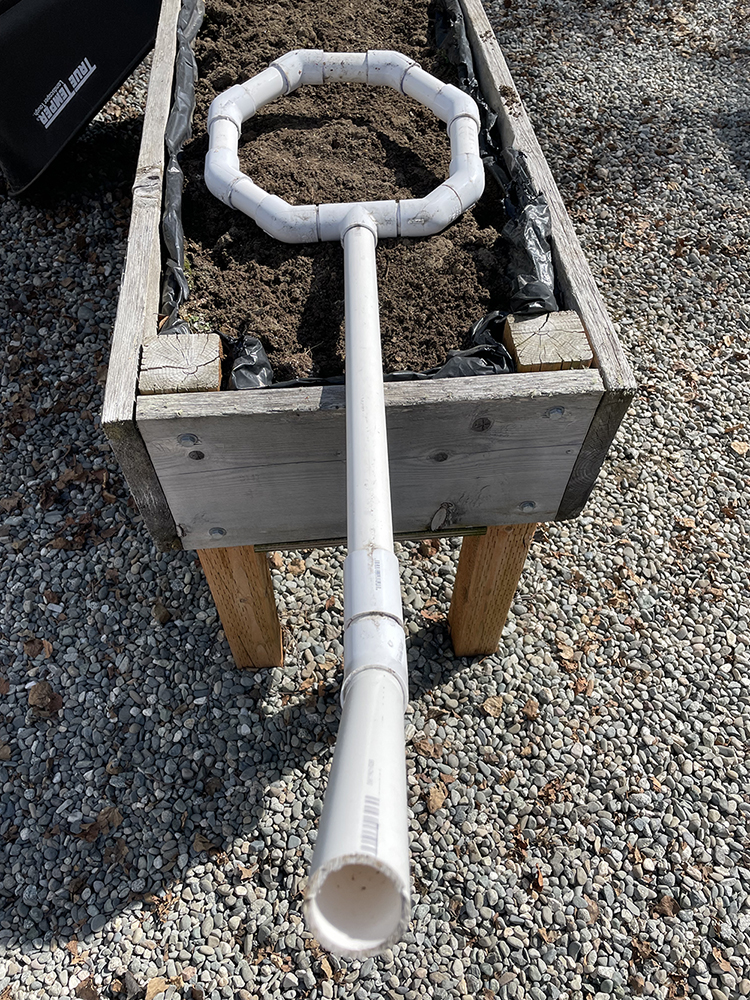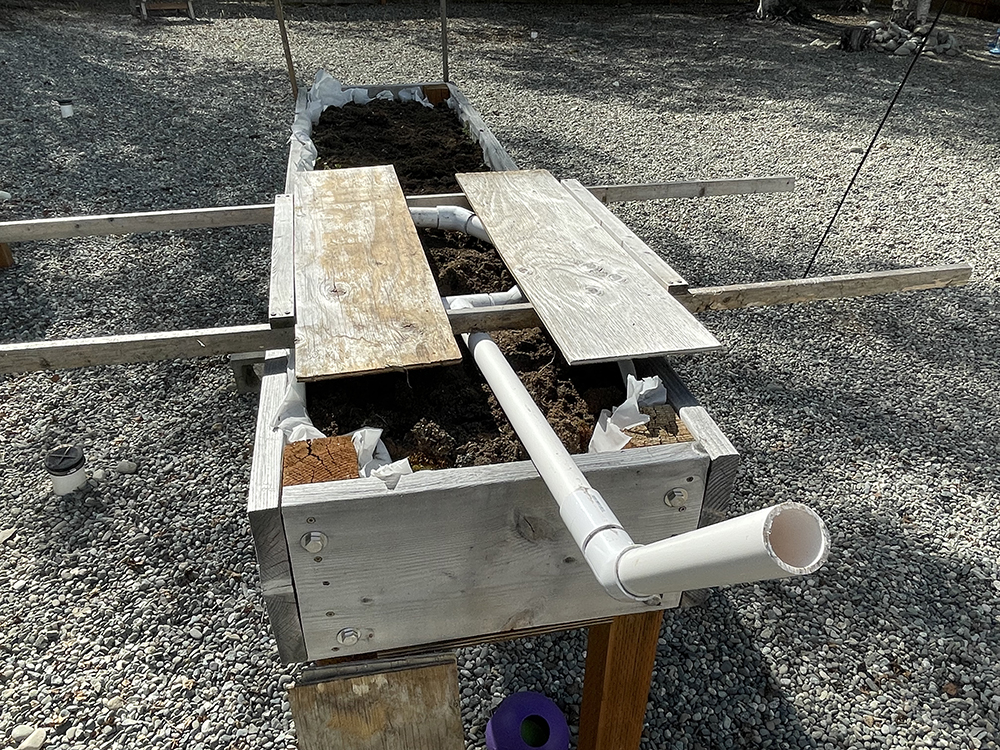Growing Giant Alaska Cabbages
HGA-00049 View this publication in PDF form to print or download.
Why a giant cabbage?
Giant cabbages play a large role in the mystique and identity of Alaska. One of the most commonly heard questions asked by visitors to the 49th State is “where can I see a giant cabbage?” Aside from being an important part of Alaska’s culture, the cabbage described in this publication is delicious and very nutritious.

Variety Selection
Although Alaska’s long summer days play a big role in growing a giant cabbage, genetics are the most important factor for growing a behemoth. The most commonly grown giant cabbage variety in Alaska is OS Cross (Brassica oleracea). This sweet tasting variety is bolt resistant and can easily reach 50 pounds or more in weight.

When to Start
Choosing when to start your cabbage seeds depends upon the intended purpose of your cabbage. Those wishing to enter competitions or exhibitions may start as early as February. This will require growing lights and a greenhouse to maintain growth until the plants can safely be transplanted outside.
Plant the seeds in 1-inch cell seed trays. They are best planted at 70° F. The seeds will germinate in 5-7 days and the temperature should be reduced to 65° F at that time. If being grown under supplemental lighting, they should receive 10-12 hours of light per day. The seedlings can be transplanted into larger trays or pots after the cotyledons (first two seed leaves) appear.
Outside Transplanting Preparation
The seedlings can be transplanted into raised beds or directly into the ground when the threat of a hard frost is past. Your cabbage will need at least 16 square feet of space. For the largest possible cabbage, a watering system must be built that will allow water and nutrients to be carried underneath the cabbage as it grows larger and larger.

A watering system can be built out of 2-inch PVC piping to form an upwardly angled delivery pipe. The delivery pipe attaches to a watering ring made of PVC elbows. 1/4-inch holes are drilled into the bottom of the watering ring to evenly disperse the water. The cabbage will be planted through the middle of the watering ring.
Fertilization and Watering
Before transplanting your cabbage to its final site, fertilize and till the soil with 6 pounds/100 square feet of 8-32-16 fertilizer.
If organic fertilizer amendments are desired, use chicken, rabbit, goat or sheep manure. Ideally, the cabbage should be watered each day to prevent the cabbage head from splitting as the result of dry soil and an unforeseen heavy rain event. Liquid fertilizers and/or manure teas can be applied each week through the watering system.
Harvesting and Transport System
If you intend to enter your cabbage in a competition you will need an easy way to transport your heavy and bulky cabbage. This can be accomplished by placing 1-foot by 2-foot boards approximately 2 feet apart over the watering ring. Thin plywood panels can be placed over the board to act as a growing platform for the cabbage to rest upon.
Leave a 6-inch space for the cabbage to grow through. To harvest the cabbage, have an assistant lift one side of the transport system while you reach under and cut the root with a pruning saw. The transport system can now be used like a stretcher to move the cabbage.

Slug Control
Depending upon where you are growing your giant cabbage, slugs may be a real problem. For garden frames and raised beds, attaching adhesive copper stripping found in garden stores is effective. Iron phosphate provides slug control and is considered organic. One commonly found iron phosphate product is Sluggo. A 10% ammonia in water solution applied with a spray bottle also provides an effective spot control.
To simplify terminology, trade names of products or equipment may have been used in this publication. No endorsement of products or firms mentioned is intended, nor is criticism implied of those not mentioned.
Stephen Brown, Extension Faculty, Agriculture and Horticulture and Eva Cohnen-Brown, Alaska Master Gardener.
New January 2023

